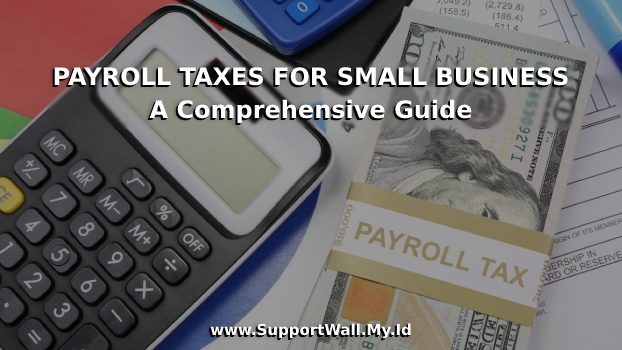Payroll taxes are an important aspect of running a small business. These are taxes that employers must pay on behalf of their employees. Include Social Security, Medicare, and federal income taxes.
Payroll tax can be a big expense for small businesses, and not paying them correctly can result in hefty fines and legal troubles.
This comprehensive guide covers everything you need to know about small business payroll tax.
Read more about the different types of payroll tax, how they are calculated and how you can comply.
Whether you are a new business owner or someone who has been in business for years. This guide will help you navigate the complex world of payroll taxes.
Types of Payroll Taxes
There are several types of payroll taxes that small businesses should be aware of They include:
1. Medicare Payroll Taxes
This tax funds the medicare program, which provides health benefits to people who qualify.
Both employers and employees contribute to this tax, each contributing 1.45% of the employee’s salary.
2. Social Security Tax
This tax funds social security programs that provide pension, disability, and survivor benefits to those who qualify.
Both the employer and the employee contribute to this tax, each contributing her 6.2% of the employee’s wages.
3. Federal Income Tax
Employers must withhold federal income tax from their employees’ wages. The amount of tax withheld depends on the employee’s tax return status and the number of exemptions requested by the employee.
Also Read: Understanding The Basics of Federal Income Tax
Calculating Payroll Taxes
Calculating payroll tax can be a complicated process, but it’s important to get it right Here are the steps required to calculate your payroll tax:
1. Determine The Employee’s Gross Pay
Determining an employee’s gross salary is an important step in calculating small business payroll taxes.
Gross wages are the sum of an employee’s earnings before deductions such as taxes and contributions to pension plans and health insurance.
To decide the gross pay, you may want to remember the employee’s hourly charge or earnings and the range of hours labored in the course of the pay period.
For hourly employees, multiply the hourly charge through the range of hours labored to get the gross pay.
For salaried employees, divide the yearly earnings through the range of pay durations withinside the year.
2. Calculate Social Security and Medicare Taxes
The first step in calculating your Social Security and Medicare taxes is to determine your employee’s gross salary.
Social Security tax is calculate at a rate of 6.2% of an employee’s gross salary. With a maximum wage base limit of $160,200 in 2023.
This means that employees earning more than the cap on the wage scale do not have to pay social security taxes on their additional earning.
With an additional 0.9% Medicare tax imposed on wages and self-employment income above certain thresholds. The additional 0.9% Medicare tax applies to individuals earning over $200,000 for single filers and $250,000 for married couples filing jointly.
3. Calculate Federal Income Tax
Calculating federal income tax is an essential step in managing your personal finances. There are several factors that affect the amount of federal income tax an individual owes.
The Internal Revenue Service (IRS) sets federal tax rates based on income, marital status, filing status, and more. This answer reviews the steps required to calculate federal income tax.
The first step in calculating federal earnings tax is figuring out an individual’s taxable earnings. This includes taking their gross earnings and subtracting any relevant deductions or exemptions.
The ensuing discern is call taxable earnings. It’s far the quantity used to decide an individual’s federal earnings tax liability.
4. Calculate any other deductions
There are several factors to consider when calculating the deduction from your personal income.
Common deductions that can be deducted from an employee’s salary. Include pension contributions, medical insurance premiums. And contributions to flexible expenditure accounts (FSAs) for medical or nursing care expenses.
Other deductions may include wage garnishment for unpaid debts and court-ordered child support payments.
Pension contributions are often deducted from an employee’s salary before taxes are collected. This can reduce the amount of taxable income Similarly, health insurance premiums and his contributions to the FSA are also pre-tax deductible, providing potential tax savings for the worker.
Conclusion
In summary, employee payroll includes various deductions including federal income tax, social security tax, Medicare tax, and other deductions such as health insurance, pension contributions, and foreclosures.
It is important for employers to understand these deductions and related tax laws to ensure that they withhold and pay the required amounts correctly.
Failure to comply with these laws can result in serious penalties and legal consequences for employers.
Employers can use various tools such as payroll software and consult taxes expert to ensure that their employees’ salaries are calculated accurately and that they comply with relevant laws and regulations I can.
